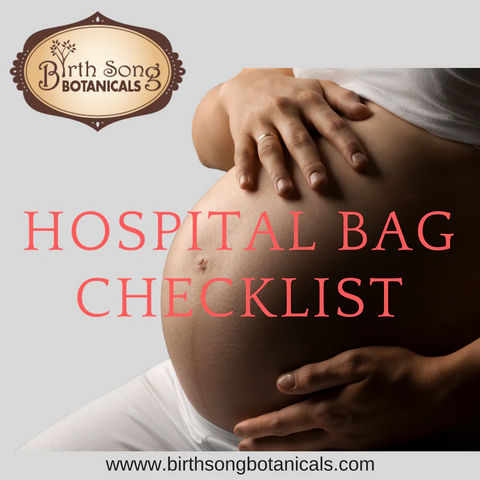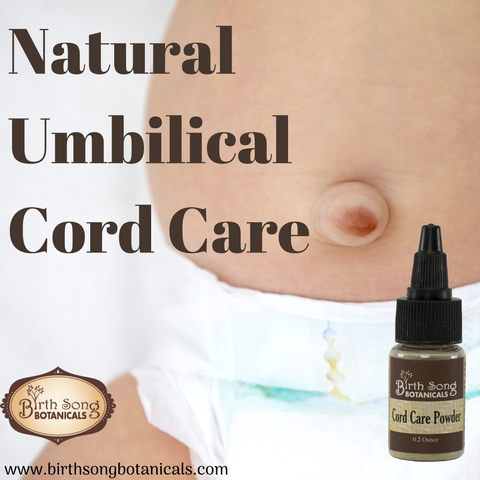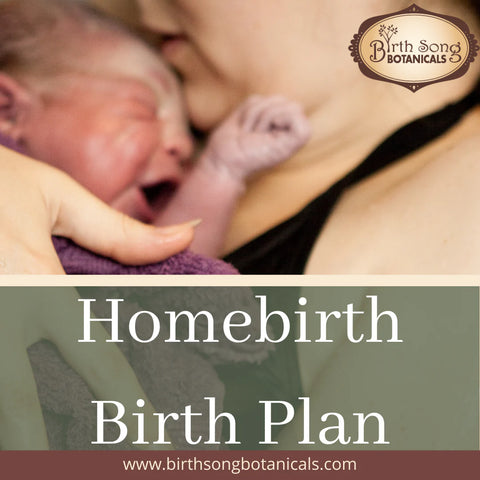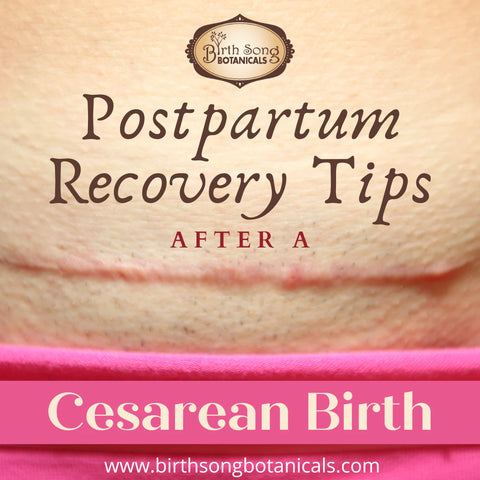Cesarean Sections: Risks, Prevention, and Herbs for Recovery
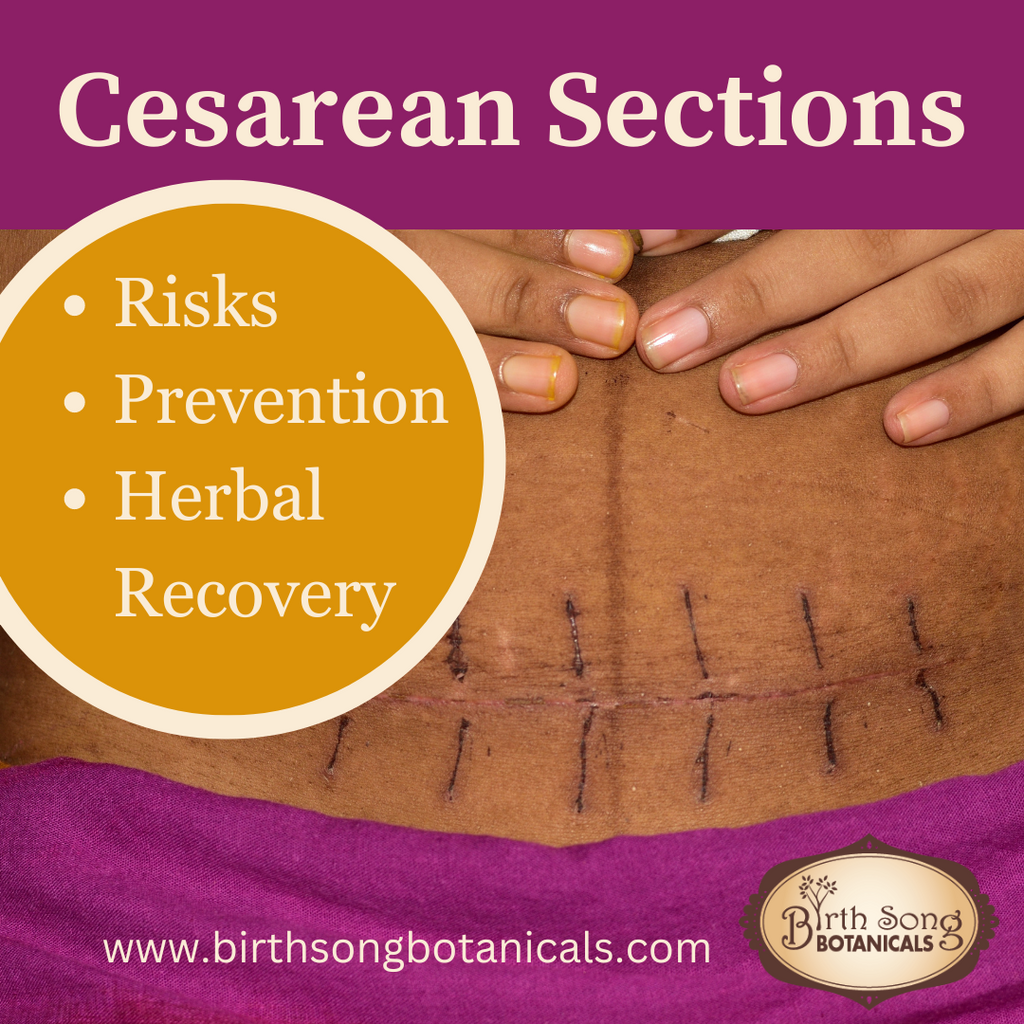
April is Cesarean Awareness Month, making it the perfect time to understand and address cesarean section rates, factors, prevention, and natural remedies for recovery.
According to new research from the World Health Organization (WHO), cesarean section use continues to rise globally, now accounting for more than 1 in 5 (21%) of all childbirths. This number is set to continue increasing over the coming decade, with nearly a third (29%) of all births likely to take place by cesarean section by 2030.
Why Are There So Many Cesarean Births?
Several factors contribute to the high rates of cesarean sections (C-sections) in many countries around the world. While cesarean sections can be life-saving procedures when medically necessary, the overuse or unnecessary use of C-sections can lead to increased healthcare costs, longer recovery times, and potential risks for both mothers and babies. Some of the key factors contributing to the high rates of C-sections include:
1. Medical Indications:
Cesarean sections are often performed for medical reasons to safeguard the health and well-being of the mother and baby. Common medical indications for C-sections include fetal distress, breech presentation, placenta previa, maternal health conditions (such as preeclampsia or diabetes), and complications during labor (such as prolonged labor or failure to progress). In some cases, cesarean section may be recommended as the safest delivery option for the mother or baby based on individual circumstances.
2. Technological Advances and Convenience:
The availability of advanced medical technology and surgical techniques has made cesarean section a safer and more accessible option for childbirth in many settings. Some healthcare providers and expectant parents may opt for elective cesarean sections for reasons of convenience, scheduling, or perceived safety, even in the absence of medical indications. Additionally, cultural attitudes toward childbirth and perceptions of safety may influence the decision to choose cesarean section over vaginal birth.
3. Fears and Litigation Concerns:
Fear of labor pain, childbirth complications, or adverse outcomes may influence some women to request elective cesarean sections or healthcare providers to recommend cesarean delivery as a precautionary measure. Healthcare providers may also be concerned about potential legal liability in cases of adverse outcomes during vaginal birth, leading to a preference for cesarean delivery to mitigate perceived risks.
4. Financial Incentives and Reimbursement Practices:
Financial considerations and reimbursement practices within healthcare systems can impact the rates of cesarean sections. In some settings, hospitals or healthcare providers may receive higher reimbursement rates for cesarean deliveries compared to vaginal births, leading to financial incentives to perform cesarean sections. Additionally, the perceived efficiency and predictability of cesarean delivery may appeal to healthcare providers and hospitals seeking to optimize resource utilization and minimize labor-related costs.
5. Maternal Choice and Autonomy:
Women's preferences and autonomy in childbirth decision-making play a significant role in cesarean section rates. Some women may express a preference for elective cesarean section based on personal beliefs, past childbirth experiences, or concerns about vaginal birth. Healthcare providers should support women in making informed decisions about their childbirth options, taking into account individual preferences, values, and medical considerations.
6. Provider Practice Patterns and Culture:
Healthcare provider practice patterns, institutional policies, and cultural norms surrounding childbirth can influence cesarean section rates. Variability in cesarean section rates between different hospitals, regions, or countries may reflect differences in provider practice styles, institutional protocols, and cultural attitudes toward childbirth. Efforts to standardize and implement evidence-based practices for labor management and cesarean section decision-making can help reduce unwarranted variation in cesarean section rates.
Addressing the high rates of cesarean sections requires a multifaceted approach that considers clinical guidelines, patient preferences, healthcare provider practice patterns, and systemic factors within healthcare systems. Efforts to promote evidence-based maternity care, support informed decision-making, and optimize the safety and outcomes of both vaginal and cesarean deliveries are essential for improving maternity care practices and reducing unnecessary cesarean sections.
Risk of Elective Cesarean Births for the Baby
Elective cesarean section, also known as cesarean delivery without a medical indication, carries certain risks and potential complications for the baby. While cesarean section can be a life-saving procedure when medically necessary, performing it without a clear medical indication may expose the baby to unnecessary risks. Here are some of the dangers to the baby associated with elective cesarean section:
1. Respiratory Complications:
Babies born via cesarean section are at a higher risk of respiratory complications compared to those born vaginally. This is because they may not experience the natural compression and passage through the birth canal, which helps clear lung fluid and stimulate breathing. As a result, babies born via cesarean section may be more prone to transient tachypnea of the newborn (TTN), respiratory distress syndrome (RDS), and other respiratory issues.
2. Delayed Breastfeeding Initiation:
Elective cesarean section may result in delayed initiation of breastfeeding compared to vaginal birth. The surgical procedure and postoperative recovery period can interfere with the mother's ability to breastfeed immediately after birth, which may impact the establishment of breastfeeding and early bonding between the mother and baby.
3. Increased Risk of Infections:
Babies born via cesarean section are at a slightly higher risk of developing certain infections compared to those born vaginally. This is partly due to the absence of exposure to beneficial bacteria in the birth canal, which helps colonize the baby's gastrointestinal tract and strengthen their immune system. Additionally, the surgical incision and exposure to hospital environments may increase the risk of postoperative infections in cesarean-born babies.
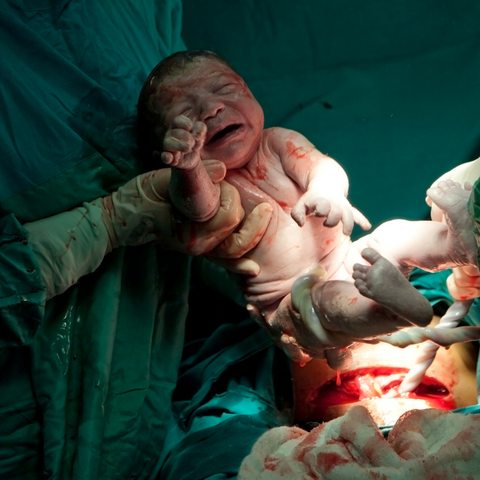
4. Surgical Complications:
Elective cesarean section carries inherent risks associated with the surgical procedure itself, including the potential for surgical complications such as injury to the baby during delivery, accidental lacerations, or surgical site infections. While these complications are relatively rare, they can have serious consequences for the baby's health and well-being.
5. Long-Term Health Implications:
Some research suggests that babies born via cesarean section may have a slightly increased risk of certain long-term health conditions compared to those born vaginally. These may include asthma, allergies, obesity, and autoimmune disorders. While the exact reasons for these associations are not fully understood, they highlight the potential impact of birth mode on lifelong health outcomes.
It's important to note that cesarean section is a valuable medical intervention when medically necessary to safeguard the health and well-being of the mother and baby. However, elective cesarean section without a clear medical indication should be carefully considered, weighing the potential risks and benefits for both the mother and baby. Healthcare providers and expectant parents should engage in informed decision-making and discuss the potential implications of elective cesarean section on the baby's health and development.
Risk of Elective Cesarean Births for the Mother
Elective cesarean section, like any surgical procedure, carries certain risks and potential complications for the mother. While cesarean section can be a necessary and life-saving intervention in certain situations, performing it without a clear medical indication may expose the mother to unnecessary risks. Here are some of the dangers to the mother associated with elective cesarean section:
1. Surgical Risks:
Cesarean section is a major abdominal surgery and carries inherent risks associated with the surgical procedure itself. These risks may include infection at the incision site, excessive bleeding (hemorrhage), blood clots (thrombosis), injury to surrounding organs, adverse reactions to anesthesia, and complications related to wound healing. While these complications are relatively uncommon, they can have serious implications for the mother's health and well-being.
2. Increased Risk of Maternal Morbidity:
Compared to vaginal birth, cesarean section is associated with a higher risk of maternal morbidity, including complications such as surgical site infections, wound dehiscence (opening of the surgical incision), pelvic adhesions, and postpartum hemorrhage. These complications can prolong recovery time, increase the need for additional medical interventions, and impact the mother's ability to care for herself and her newborn in the postpartum period.
3. Longer Recovery Time:
Recovery from cesarean section typically involves a longer hospital stay and a more extended recovery period compared to vaginal birth. Mothers who undergo cesarean section may experience pain, discomfort, and mobility limitations in the days and weeks following the procedure, which can affect their ability to care for themselves and their newborns. Longer recovery times may also impact maternal-infant bonding and breastfeeding initiation.
4. Impact on Future Pregnancies:
Elective cesarean section may have implications for future pregnancies and childbirth experiences. Multiple cesarean sections increase the risk of complications such as placenta previa (where the placenta implants low in the uterus, covering the cervix) and placenta accreta (where the placenta attaches too deeply into the uterine wall), which can lead to serious maternal complications in subsequent pregnancies. Additionally, cesarean section may increase the likelihood of uterine rupture and other complications in future labors.
5. Psychological Impact:
For some women, undergoing cesarean section, especially when not medically necessary, can have a significant psychological impact. Women may experience feelings of disappointment, loss, or failure if their birth experience does not align with their expectations or desires. Additionally, recovering from major surgery and coping with the physical and emotional challenges of childbirth may contribute to feelings of anxiety, depression, or post-traumatic stress disorder (PTSD) in some women.
Healthcare providers and expectant mothers need to engage in informed decision-making and discuss the potential risks and benefits of elective cesarean section versus vaginal birth. We cannot say this enough: while cesarean section can be a necessary intervention in certain circumstances, elective cesarean section should be approached cautiously, considering the potential implications for the mother's health, recovery, and future pregnancies.
How Cesarean Birth Effects Breastfeeding:
Cesarean sections can affect breastfeeding initiation and establishment in several ways, although many women who have had cesarean sections are still able to breastfeed successfully with appropriate support. Here are some of the ways in which cesarean sections can impact breastfeeding:
1. Delayed Initiation:
Women who have cesarean sections often experience delays in initiating breastfeeding compared to those who have vaginal births. The surgical procedure and recovery process may temporarily limit the mother's mobility and ability to hold and nurse her baby immediately after birth. This delay in initiating breastfeeding can affect the early establishment of breastfeeding patterns and bonding between the mother and baby.
2. Impaired Maternal-infant Bonding:
The immediate postoperative period following a cesarean section may involve separation between the mother and baby, which can impair maternal-infant bonding and hinder the initiation of breastfeeding. Mothers may feel groggy or disoriented after surgery, and babies may be taken to the nursery for monitoring or care while the mother is in recovery. This separation can disrupt the natural breastfeeding cues and hinder the baby's ability to latch and nurse effectively.
3. Reduced Milk Production:
Some studies suggest that women who undergo cesarean sections may experience delays in the onset of lactogenesis II, also known as the "milk coming in" phase. This delay in milk production may be related to hormonal factors or stress associated with the surgical procedure. As a result, mothers may perceive their milk supply as inadequate in the early postpartum period, leading to concerns about breastfeeding success.
4. Breastfeeding Challenges:
Women who have cesarean sections may encounter specific challenges related to breastfeeding positions and latch. The surgical incision and postoperative discomfort may make it difficult for mothers to find comfortable breastfeeding positions, especially positions that involve pressure on the abdomen or incision site. Babies born via cesarean section may also have difficulty achieving a deep latch due to factors such as birth trauma or respiratory distress.
5. Maternal Pain and Discomfort:
Postoperative pain and discomfort following a cesarean section can impact a mother's ability to breastfeed comfortably and effectively. Mothers may experience pain at the incision site or discomfort when holding or positioning their baby for breastfeeding. Pain medications prescribed for postoperative pain management may also affect the mother's alertness or milk production.
Despite these challenges, many women who have cesarean sections are able to breastfeed successfully with appropriate support and guidance. Strategies to support breastfeeding after cesarean section may include early skin-to-skin contact between the mother and baby, support from lactation consultants or breastfeeding specialists, assistance with breastfeeding positioning and latch, and encouragement to initiate breastfeeding as soon as possible after surgery. It's essential for healthcare providers to provide individualized support and encouragement to mothers who have had cesarean sections to help facilitate successful breastfeeding initiation and establishment.
Best Ways to Prevent Unnecessary Cesarean Births:
Preventing the need for a cesarean section involves a combination of factors, including maintaining overall health during pregnancy, choosing appropriate prenatal care, and being informed and proactive about childbirth options. Here are some of the best ways to help reduce the likelihood of needing a cesarean section:
1. Attend Regular Prenatal Check-ups:
Regular prenatal care is essential for monitoring the progress of your pregnancy and addressing any potential risk factors or complications early on. Attend all scheduled prenatal appointments and communicate openly with your healthcare provider about your health, concerns, and birth preferences.
2. Stay Active and Healthy:
Maintaining a healthy lifestyle during pregnancy can help reduce the risk of complications and promote optimal fetal positioning for childbirth. Eat a balanced diet rich in nutrients, stay hydrated, get regular exercise (with your healthcare provider's approval), and avoid harmful substances such as tobacco, alcohol, and drugs.
3. Educate Yourself About Childbirth:
Knowledge is empowering when it comes to childbirth. Educate yourself about the birthing process, common interventions, and potential complications. Consider taking childbirth education classes or attending prenatal workshops to learn about natural childbirth techniques, pain management options, and strategies for coping with labor.
4. Consider Birth Setting and Provider:
Choose a birth setting such as your home, birth center, hospital, and healthcare provider that aligns with your birth preferences and values. Seek out providers, midwives, and OBs who have experience and expertise in supporting natural childbirth and who are open to discussing your birth plan and preferences. Consider hiring a doula or childbirth educator to provide additional support and advocacy during labor.
5. Have a Birth Plan and Discuss Birth Preferences and Concerns:
Have open and honest discussions with your healthcare provider about your birth preferences, concerns, and any previous childbirth experiences. In your birth plan, discuss your desire for a vaginal birth and your willingness to try natural labor techniques, if appropriate. Ask questions about the provider's approach to childbirth, their cesarean section rate, and their willingness to support your birth preferences.
6. Stay Flexible and Informed During Labor:
- Labor and childbirth can be unpredictable, and plans may need to change based on the progression of labor and the health of you and your baby. Stay flexible and open to different birthing positions, comfort measures, and interventions. Advocate for yourself and your baby by asking questions, expressing your preferences, and seeking clarification about proposed interventions.
7. Consider Labor Support:
Include your partner every step of the way, from planning your birth to being in labor. Consider having continuous professional labor support, such as a doula or a monitrice who can provide emotional support, physical comfort, and advocacy during labor. Studies have shown that women who receive continuous support during labor are less likely to need interventions, including cesarean section, and report more positive birth experiences overall.
8. Discuss VBAC (Vaginal Birth After Cesarean) Options:
If you've had a previous cesarean section and are considering attempting a vaginal birth after cesarean (VBAC), discuss your options with your healthcare provider. Depending on your individual circumstances, VBAC may be a safe and appropriate choice for subsequent pregnancies. Consider factors such as your medical history, the reason for your previous cesarean section, and the availability of supportive resources for VBAC.
By taking proactive steps to maintain your health, educating yourself about childbirth options, and communicating openly with your healthcare provider, you can help reduce the likelihood of needing a cesarean section and increase your chances of achieving a positive birth experience. WHO recommendations: non-clinical interventions to reduce unnecessary cesarean sections
Natural Remedies and Herbs for C-Section Postpartum Recovery
Natural remedies and herbs can be used to support C-section recovery by promoting healing, reducing discomfort, and enhancing overall well-being. However, it's essential to consult with a healthcare provider before using any herbs or supplements, especially during the postpartum period and if you're breastfeeding, to ensure they are safe and appropriate for your individual circumstances. Here are some natural remedies and herbs that may be beneficial for C-section recovery:
1. Arnica:
Arnica montana is a popular herb known for its anti-inflammatory and pain-relieving properties. Arnica can be taken orally in a homeopathic form and be used topically in the form of creams, gels, or ointments to reduce swelling, bruising, and muscle soreness associated with C-section incisions. It's important to apply arnica only to intact skin and avoid using it on open wounds.
2. Calendula:
Calendula officinalis, also known as marigold, has soothing and anti-inflammatory properties that can promote wound healing and reduce skin irritation. Calendula can be applied topically as a cream, salve, antiseptic spray, or infused oil to the C-section incision site to soothe discomfort and support healing.
3. Comfrey:
Comfrey (Symphytum officinale) is an herb known for its wound-healing and tissue-regenerating properties. Comfrey can be used topically as a poultice, salve, or infused oil to promote the healing of C-section incisions and reduce scar tissue formation. However, comfrey should not be used on open wounds or taken internally due to potential liver toxicity.
4. Chamomile:
Chamomile (Matricaria chamomilla) is a gentle herb with anti-inflammatory and calming properties. Chamomile can be used topically as a compress or infused oil to soothe C-section incisions and reduce swelling, redness, and discomfort. Chamomile blended in an herbal tincture is a wonderful aid for reducing afterbirth contractions and body aches. Additionally, drinking chamomile tea may help promote relaxation, reduce stress, and support overall well-being during the postpartum period.
5. Echinacea:
Echinacea purpurea is an herb known for its immune-stimulating and wound-healing properties. Echinacea can be taken internally as a tincture, tea, or capsule to support the body's natural healing processes and reduce the risk of postoperative infections following a C-section. However, echinacea should be used with caution, especially if you have autoimmune conditions or allergies to plants in the Asteraceae family.
6. Witch Hazel:
Witch hazel (Hamamelis virginiana) is a natural astringent with anti-inflammatory and soothing properties. Witch hazel can be applied topically as a compress, spray, or soaked pads to the C-section incision site to reduce swelling, itching, and discomfort. Additionally, witch hazel can help cleanse the skin and promote healing without causing irritation.
7. St. John's Wort:
St. John's Wort, a medicinal herb with a history of traditional use for various health conditions, has gained attention for its potential benefits in cesarean incision recovery. Rich in compounds like hypericin and hyperforin, St. John's Wort possesses anti-inflammatory, antimicrobial, and wound-healing properties that may aid in the healing process following cesarean section. Some studies suggest that applying St. John's Wort topically to the incision site may reduce inflammation, promote tissue repair, and alleviate discomfort, potentially facilitating a smoother recovery.
8. Aloe Vera:
Aloe vera gel, obtained from the leaves of the aloe vera plant, has cooling, moisturizing, and anti-inflammatory properties that can help soothe C-section incisions and promote healing. Apply pure aloe vera gel topically to the incision site to reduce inflammation, itching, and discomfort. Avoid using commercial aloe vera products that contain added ingredients such as alcohol or fragrances.
9. Yarrow:
Yarrow (Achillea millefolium) is an herb with anti-inflammatory, antimicrobial, and styptic properties that can support wound healing and reduce bleeding. Yarrow can be used topically as a yoni steam, poultice, salve, or infused oil to promote the healing of C-section incisions and reduce the risk of infection. Additionally, drinking yarrow tea may help support overall healing and recovery during the postpartum period.
Before using any herbs or supplements for C-section recovery, it's essential to consult with your midwife or other a qualified healthcare provider, especially if you have any underlying health conditions, allergies, or concerns about potential interactions with medications or other supplements.
Please read our other postpartum blogs that focus on maintaining a healthy lifestyle, including adequate rest, hydration, nutrition, and gentle exercise, to support your body's natural healing processes during the postpartum period.
That was a lot of information, and at the end of the day birth is amazing and challenging and no matter where or how you give birth we're here to support you and your baby!


